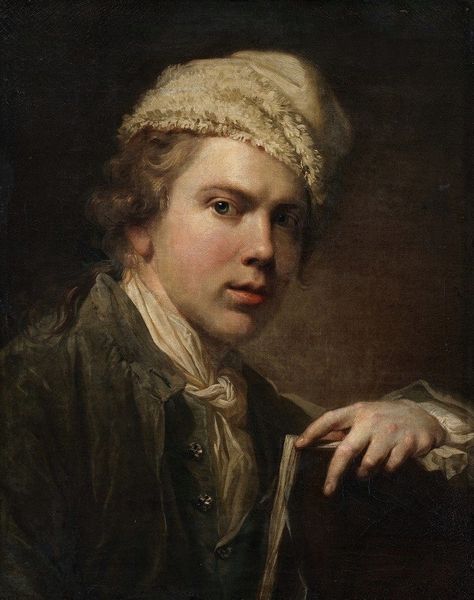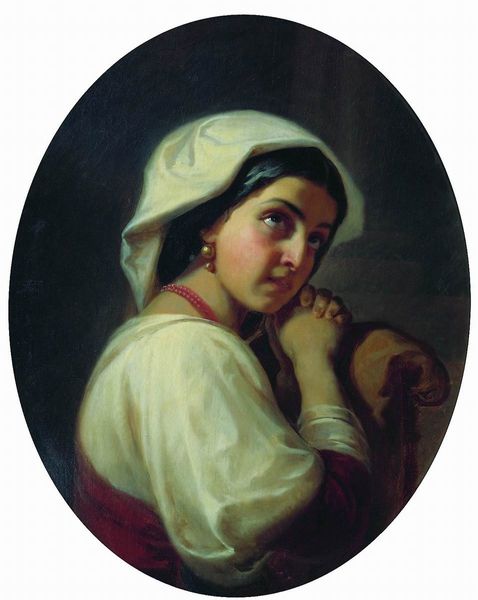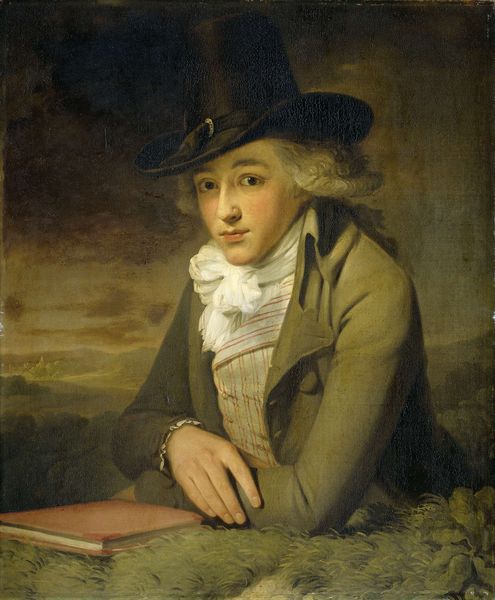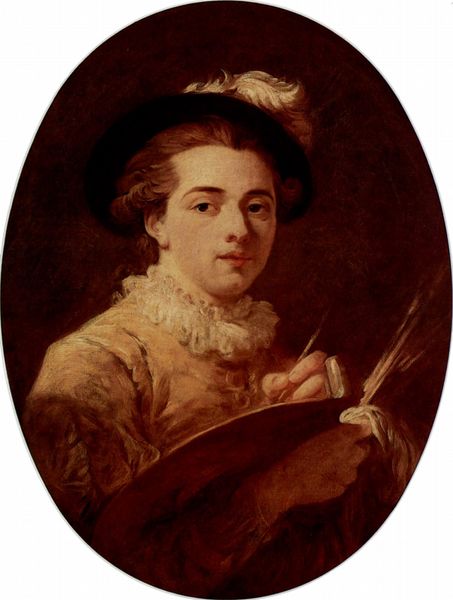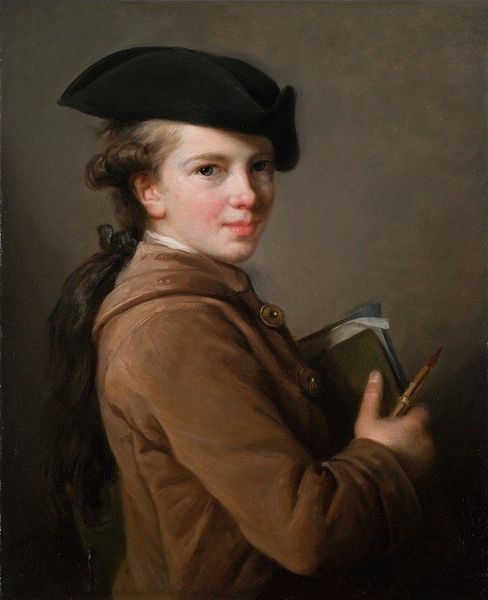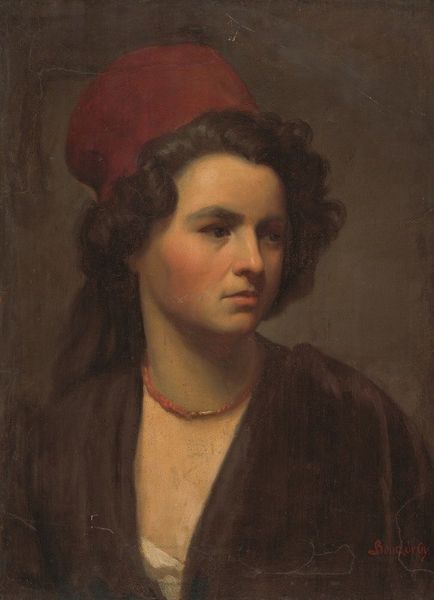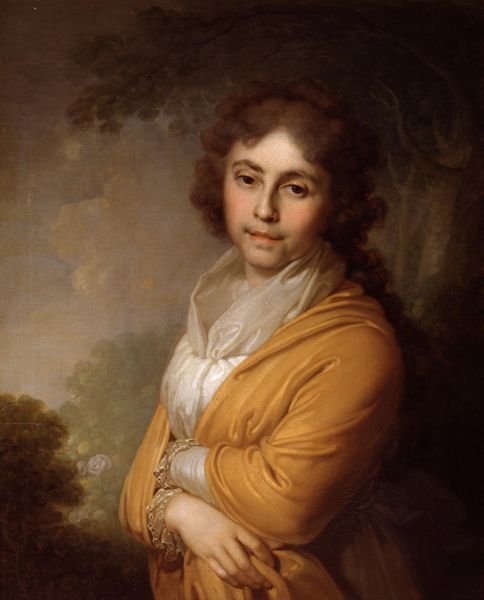
painting, wood
#
portrait
#
portrait
#
painting
#
15_18th-century
#
wood
#
history-painting
#
rococo
Dimensions: 63.5 x 52.3 cm
Copyright: Public Domain
Curator: Welcome. We’re standing before "Portrait of a Sculptor," a painting created around 1750 and currently housed in the Städel Museum. It’s by an anonymous artist. Editor: My immediate impression is one of quiet contemplation. The muted colors and soft light lend a certain intimacy, like we're catching him in a moment of private creativity. There’s a vulnerability there, in his averted gaze. Curator: The image indeed projects a compelling ambiguity regarding class and gender. It begs questions about the construction of artistic identity in the 18th century. We might read the subject's androgynous features through the lens of contemporary queer theory, unpacking societal expectations of masculine labor and artistic genius. Editor: Absolutely, and there's symbolism embedded in the sculptor’s tools: the mallet, the unfinished bust. It’s almost allegorical. The hammer embodies the action of creation and a symbol of masculine force and determination while the veiled sculpture is like an unrealized ideal and is evocative of creative potential and hidden truths yet to be uncovered. Curator: I see the potential to interpret those implements further. Does the artist’s choice to depict himself amidst labor suggest a move away from the courtly depictions of the aristocracy and perhaps, toward a more bourgeoise construction of identity that recognizes the artist through his hard work and skill? Editor: An interesting point! The headscarf, then, moves beyond its simple function. The way that soft, turban-like cap rests, along with the dark clothing, might echo earlier images of intellectualism—a quiet rebellion against the strict dictates of style and representation, almost like an emblem or subtle code for self-expression. Curator: It challenges conventional representations of artistry. The choice to position this artist, the author of his own vision, actively engaged in physical craft challenges the stereotypical elitism of the period, pointing toward a new kind of creator who finds self-determination and pride within physical action and independent labor. Editor: Thinking about the unfinished bust beside him. It feels like a promise or foreshadowing of ideas in their rawest stage that is waiting for its narrative and meanings. It’s a captivating window into a pivotal moment in the history of artistry. Curator: This examination underscores art’s remarkable ability to ignite social commentary and individual autonomy through symbolism of action. Editor: Indeed, it allows the sculpture itself to communicate powerful truths by embodying potential, revealing hidden layers, and promising new dialogues that are worth being unearthed from the block of stone.
Comments
No comments
Be the first to comment and join the conversation on the ultimate creative platform.

